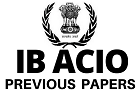sponsored links
Directions (1 to 10) : In the fol-lowing questions, read the following passage carefully and answer the questions given below it. Certain words/phrases are given in bold to help you locate them while answering some of the questions.
Over the past few days alone, the China's central bank has pumped extra cash into the financial system and cut interest rates. The aim is to free more cash for banks to lend and provide a boost for banks seeking to improve the return on their assets. The official data though, suggested that bad loans make up only 1.4% of their balance sheets. How to explain the discrepancy? One possible answer is that bad loans are a tagging indicator i.e. it is only after the economy has struggled for a while that borrowers began to suffer. Looked at this way, China is trying to anticipate problems keeping its banks in good health by susteining economic growth of nearly 7% year on year. Another more worrying possibility is that bad loans are worse than official data indicate. This does not look to be the cause for China's biggest banks, which are man-aged conservatively and largely focus on the county's biggest value and quality borrowers. But there is mounting evidence that when it comes to smaller banks, especially those yet to list on the stock market, bad loans piling up. That is important because unlisted lenders account for just over a third of the Chinese banking sector, making them as big as Japan's entire banking industry.
Although, hon-performing loans have edged up slowly, the in-crease in special-mention loans (a category that includes those over-due but not yet classified as impaired loans.) has been much bigger. Special-mention loans are about 2% at most of China's big listed banks, suggesting that such loans must be much higher at their smaller, unlisted peers. Many of these loans are simple bad debts which banks have not yet admitted to. Another troubling fact is that fifteen years ago, the government created asset-management companies (often referred to as bad-banks) to take on the non-performing loans of the lenders. After the initial transfer these companies had little to pay. But, last year, Cinda, the biggest of the bad banks, bought nearly 150 billion Yuan ($24 billion) of distressed assets last year, two-thirds more than in 2013. These assets would have raised the banks bad-loans ratio by a few tenths of a percentage point. Although such numbers do not seem very alarming, experts who reviewed last year's results for 158 banks, of which only 20 are listed found that "shadow loans", loans recorded as investments which may be a disguise for bad loans have grown to as much as 5.7 billion Yuan, or 5% of the industry's assets. These are heavily concentrated on the balance sheets of smaller-unlisted banks, and at the very least, all this points to a need for recapitalisation of small banks.
- Choose the word which is most nearly the same in meaning to the word 'TAGGING' given in bold as used in the passage.
- Choose the word which is opposite in meaning to the word FREE given in bold as used in the passage.
- expensive
- secret
- complimentary
- restrict
- charged
- According to the passage, which of the following can be said about China's large banks ?
- (A) These are cautiously run.
- (B) Their clients are mainly high value.
- (C) 2 percent of their loans have been classified as overdue but not impaired.
- Only (B)
- Only (A)
- All (A), (B) and (C)
- Only (A) and (C)
- Only (B) and (C)
- Which of the following is the central idea of the passage ?
- Small banks should be permitted to become listed on the stock exchange.
- The government should do away with asset management companies.
- China's financial crisis is not as serious as it is being made out to be.
- China's central bank has failed to predict and stop the decline of its banks.
- There is trouble brewing in China's small unlisted banks.
- Choose the word which is most nearly the same in meaning to the word 'POINTS' given in bold as used in the passage.
- peaks
- moments
- arguments
- indicates
- plugs
- Which of the following is true in the context of the passage ?
- China has not implemented any resources to help its banking sector in recent times.
- Approximately 32% of China's banking sector is unlisted.
- China's stock market has plummeted in recent times.
- Japan's banking industry is experiencing a boom unlike that of China.
- None of the given options is true in the context of the passage.
- What does the example of the Cinda convey ?
- Many of the loans given by China's banks are in trouble.
- Many such large Chinese asset management companies are failing.
- China's economy is overly dependent on large banks.
- China is the ideal destination for small banks to flourish.
- Such companies have become obsolete.
- Choose the word which is opposite in meaning to the word MOUNTING given in bold as used in the passage.
- melting
- accumulating
- removing
- submerging
- decreasing
- Which of the following best describes experts' findings regarding shadow loans ?
- Shadow loans have been steadily falling and are negligible at present.
- These are growing substantially and indicate the need for reform of small banks.
- Shadow loans are unfairly being passed onto asset management companies.
- These loans are inconsequential for the health of banks.
- The findings are faulty as if only includes few listed banks.
- What is the author's view regarding small banks ?
- These have a better loan portfolio than large banks.
- These are a good health helping to sustain economic growth of 7 percent.
- These should be merged with large banks to bail them out of trouble.
- Regulations governing these banks should be relaxed.
- Other than those given as options
shared by Sridhar Sundaram
sponsored links










 English Vocabulary from
English Vocabulary from












0 Responses:
Post a Comment